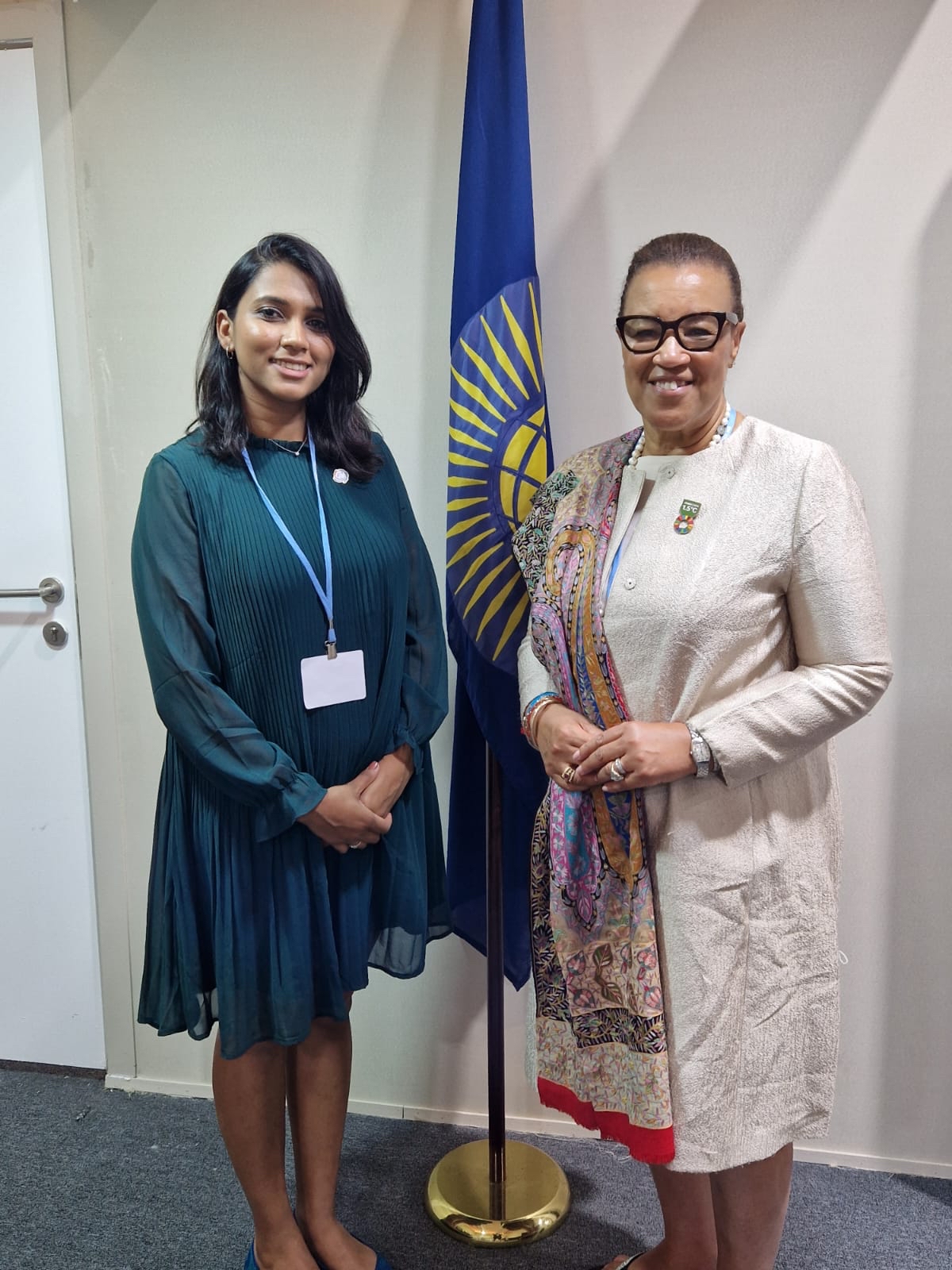Dr Josheena Naggea joined the Centre as a Visiting Scholar for a year. In November 2022, she attended the climate change conference (COP27) in Egypt as a Commonwealth youth advocate for ocean-climate action and she shares her thoughts and experience in this blog.
Dr Josheena Naggea, Mauritian ocean advocate, researcher and youth climate champion, Hoffmann Postdoctoral fellow with the Stanford Center for Ocean Solutions and the World Economic Forum.
My first experience attending the annual UN Climate Change Conference was an eye-opener. I attended the COP27 summit in Sharm El-Sheikh, Egypt from 6th to 12th November as the first Nature Zone’s Solidarity Fund recipient with ocean and climate expertise. From Day 1, I was swept off in a whirlwind of meetings, panel discussions, and speaking engagements.
What surprised and intrigued me most was the number of concrete actions and positive collaborations which happen at COP behind closed doors. With so many key actors from various public institutions, private sector and non-profit organisations in one place, it provides an opportunity for cross-sectoral discussions to support climate action from local to regional to global scales.
Negotiations at COP27
While I did not take part directly in negotiations, I participated in a wide range of events in the ‘Blue Zone’ and met dozens of ocean and climate advocates just like me, committed to making a difference. The Blue Zone is a UN managed space which hosts various pavilions such as UN agencies, countries and regions. COP27 had 156 pavilions, twice the number from COP26 in Glasgow, and for the first time, had an Ocean Pavilion and a Youth Pavilion!
It was stimulating to be around like-minded people, to share support and resources and grow my network and potential for collaborations with youth-led and ocean-focused organisations like the Sustainable Ocean Alliance, Ocean Uprise, Global Island Partnership, and the Ocean Risk and Resilience Action Alliance (ORRAA).
The coming together of so many people from around the world joining forces across regions, borders, sectors and generations to move the agenda forward was truly inspiring. The OceanxClimate Summit was one event that stood out in that it created space to reflect on the ocean-climate nexus through a variety of sessions that gave voice to indigenous, local and youth-led initiatives.

We often hear about how negotiations are not going as intended or falling short of commitments. Before and after every climate COP, I have gotten used to being drowned by the constant flow of pessimistic views in the news and social media.
Growing climate anxiety
However, my COP27 experience made me seriously reflect on how we communicate about the COP experience and processes to external audiences who do not attend this meeting (including people like me until last month!). We should be mindful not to communicate that climate change is a ‘lost cause’ from the outset, or that we have passed the point of no return.
While we are definitely in a climate emergency with power asymmetries, and the window for action is closing, failure to communicate with more nuance will cause ever increasing climate anxiety, particularly among younger generations. Overemphasis on a ‘lost cause’ could also lead to apathy or disengagement.
I have personally appreciated scholars and experts like Prof. Katherine Hayhoe who offered valuable insightful views about hope in a time of global climate change.
My own direct experience at COP27 showed me that we are more likely to mobilise action when people are hopeful and open to solutions, when they feel empowered to take action to address climate change in their own spaces from local to national scales, and when they connect with like-minded peers.
I tried to do this myself in my own little way while at COP27 through an Instagram takeover for the Stanford Doerr School of Sustainability on Day 4 of the conference. I spoke with people who were passionate about protecting our planet—academics, private sector and non-profit representatives, and youth activists—about their interests and ideas, including the Commonwealth Secretary-General!
The Instagram takeover allowed me to invite hundreds of young people to join me backstage at COP27 and engage with the conference and its attendees from afar. And that’s something every attendee should strive for: opening up the climate conversation beyond the physical space at COP.
Inclusive climate solutions
More than ever, we need to empower people with our discussions, and include more people in the process. Yes, we must voice our concerns, but it’s also critical not to let young people be overwhelmed by the ‘doom and gloom’ narrative.
We must keep the pressure to meet the goal to limit global warming to 1.5 degrees, but we cannot fill the discussion with only anger and frustration.
We need to make sure our communication and initiatives engage more people—especially those not operating in the climate sphere—instead of alienating them. Inclusion is more than ever crucial. And we also need to amplify climate solutions that have nature and people at the forefront.
I returned from COP27 feeling reflective and critical of the process, but simultaneously empowered. I wore several hats at COP – as a representative of the Commonwealth Youth, Stanford University, and the World Economic Forum as well as the UNDP-GEF-Small Grants Programme – and was able to see the synergies and connections of all these communities in one place.

Most of all, I felt grateful for the positive conversations and experiences I shared with leaders, activists, scientists, and loads of committed young people. We are indeed facing a climate crisis, but there is still hope in mobilising global action, together.
Read the original article on the Commonwealth website here.
All photos by ©Josheena Naggea.
Charles Telfair Centre is an independent nonpartisan not for profit organisation and does not take specific positions. All views, positions, and conclusions expressed in our publications are solely those of the author(s).

